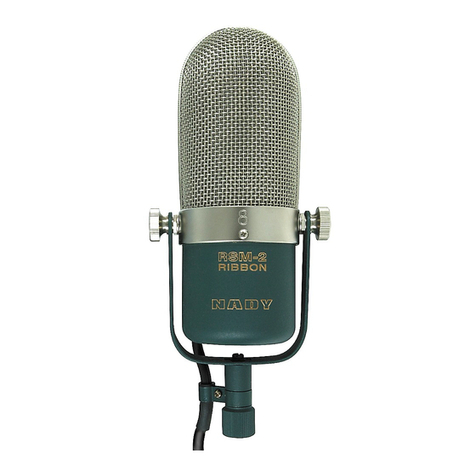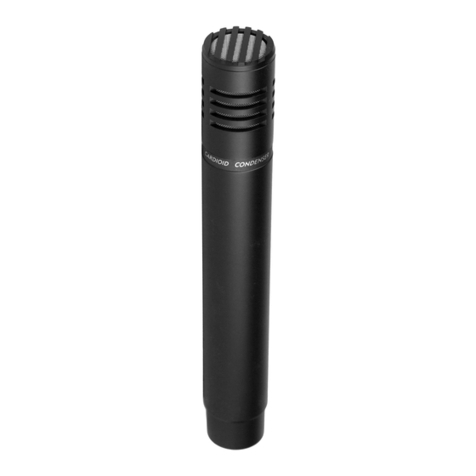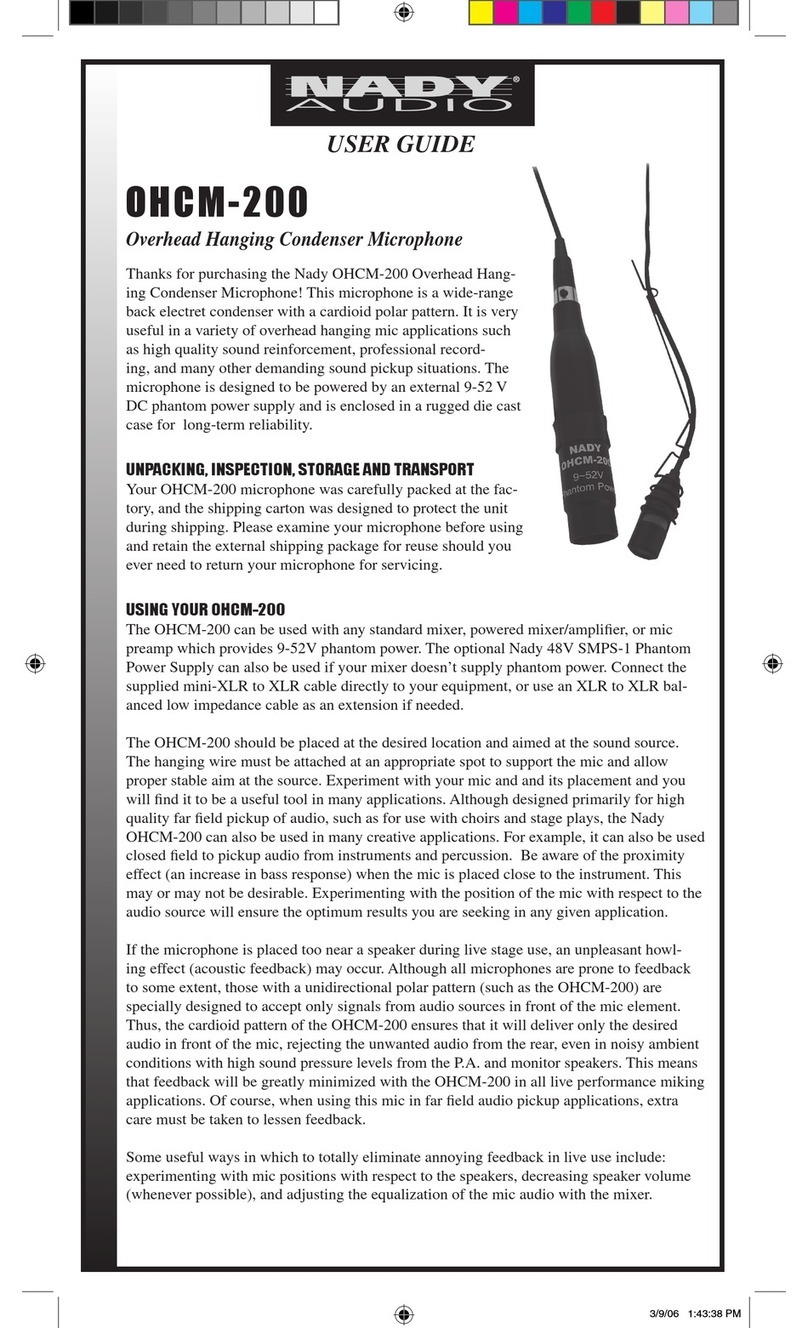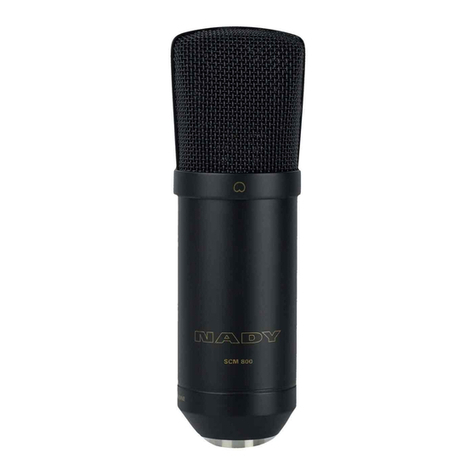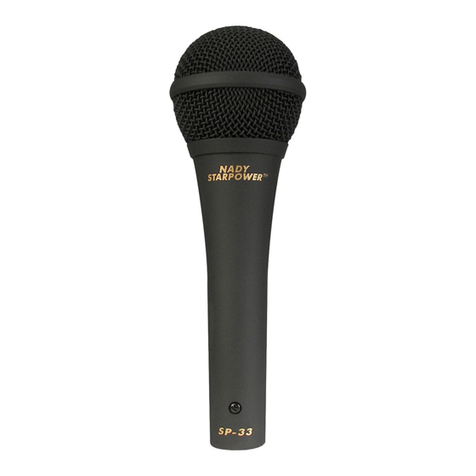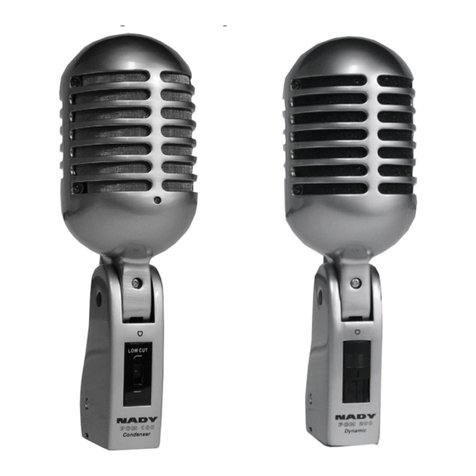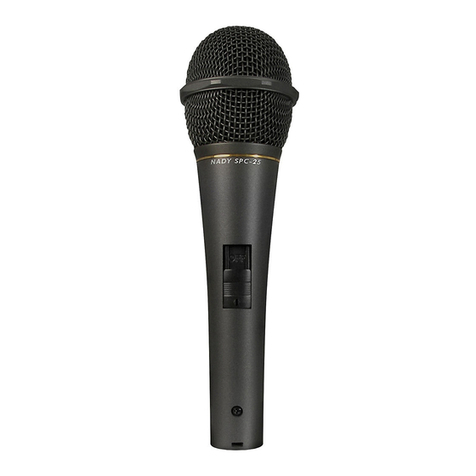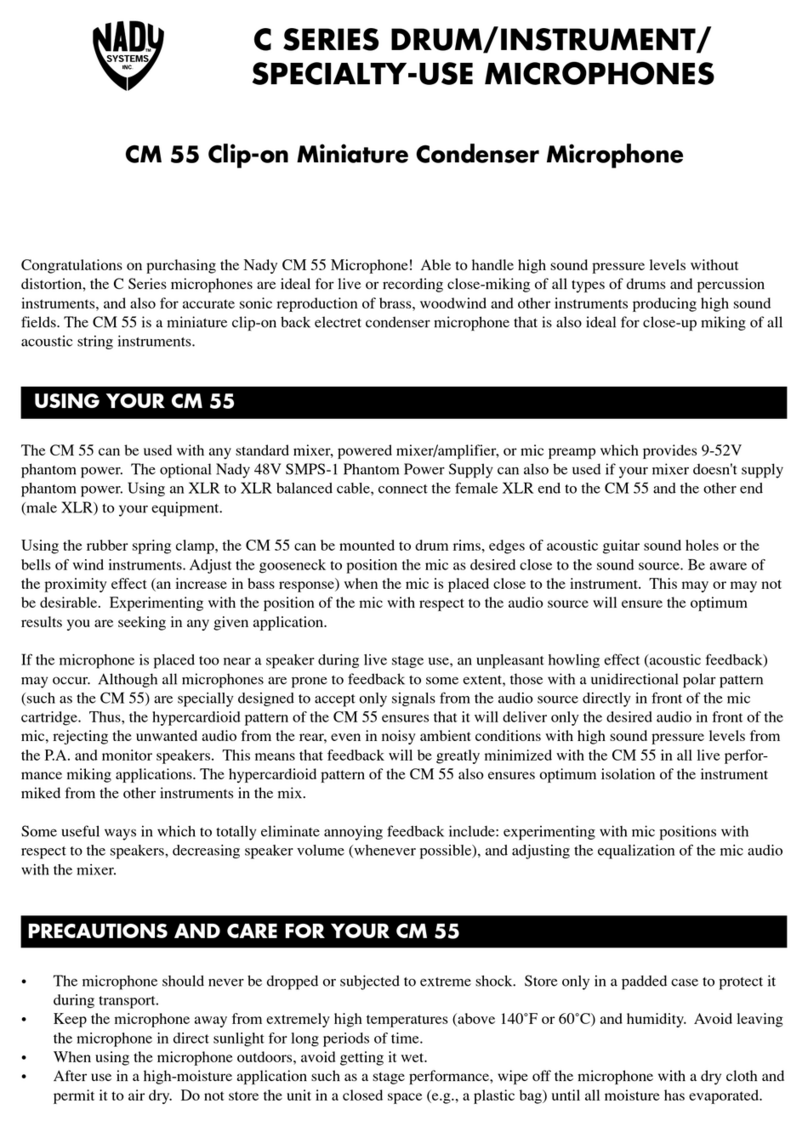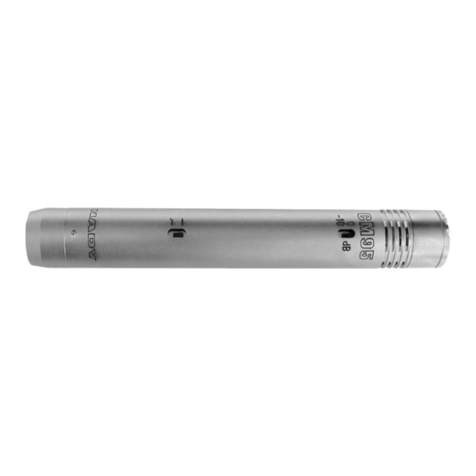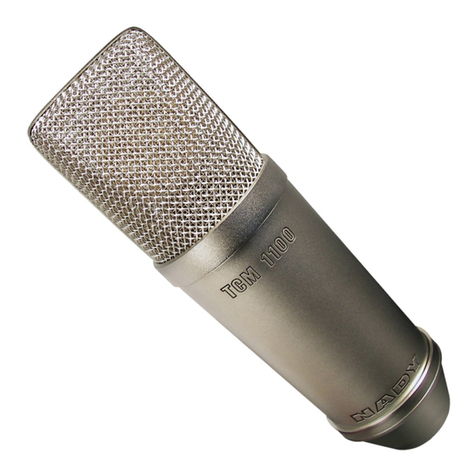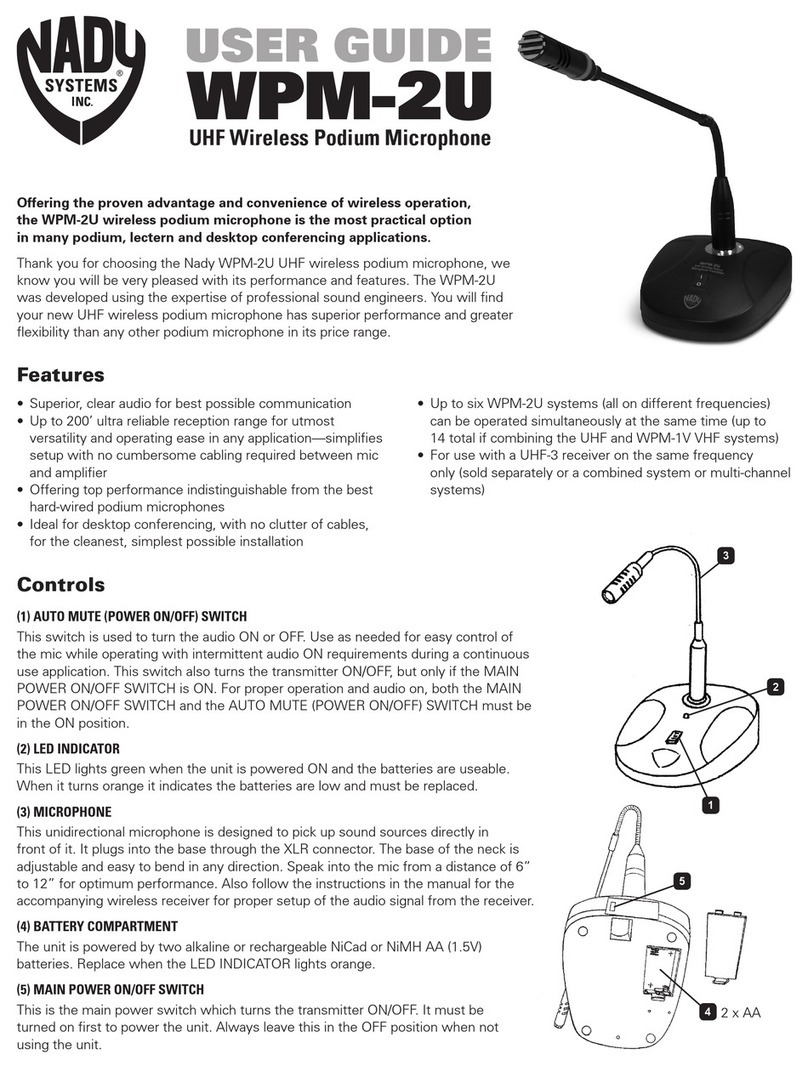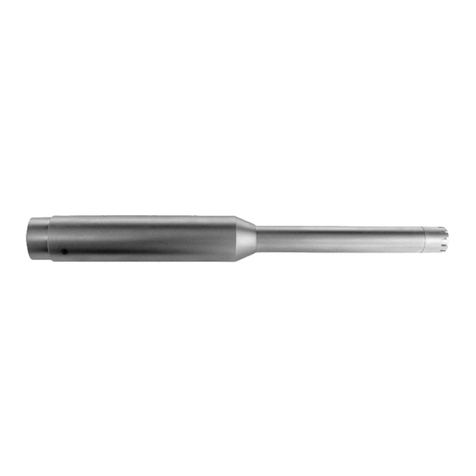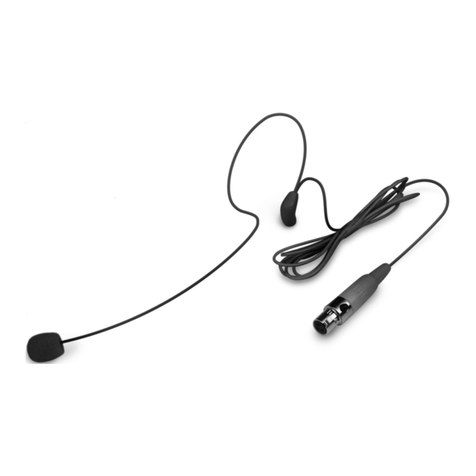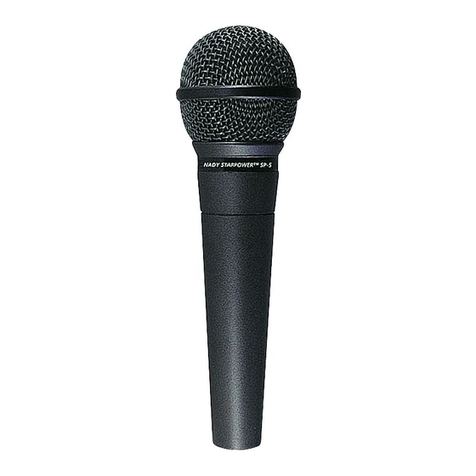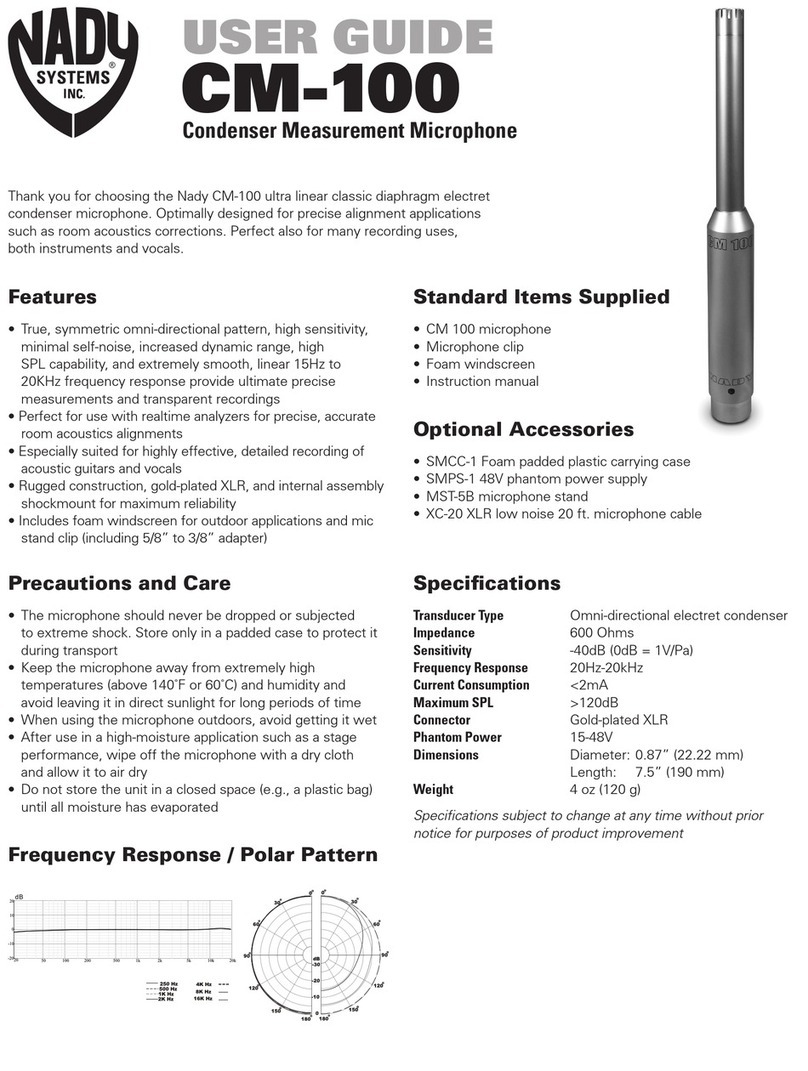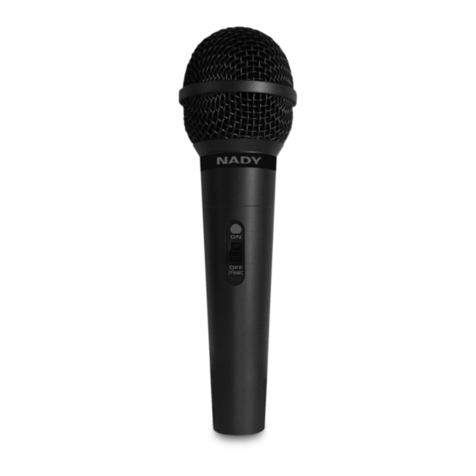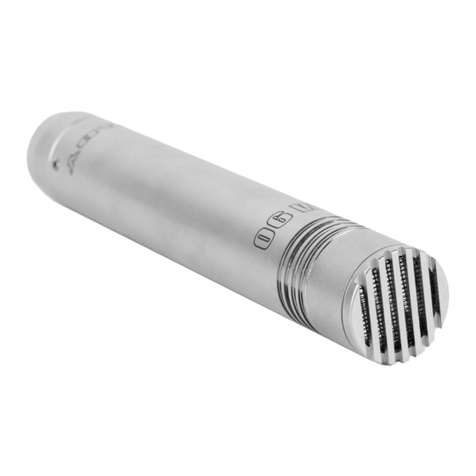
SERVICE
(U.S.) Should your Nady microphone require service, please contact the Nady Service Department via telephone at (510) 652- 2411 or e-mail at
[email protected].
(INTERNATIONAL) For service, please contact the Nady distributor in your country through the dealer from whom you purchased this product.
FREQUENCY RESPONSE
Date of purchase _________________________________________________________________________________________________________
Dealer’s Name ___________________________________________________________________________________________________________
Street __________________________________________________________________________________________________________________
City _________________________________________ State________________________ Zip __________________________________________
Note: Do not attempt to service this unit yourself as it will void your warranty.
05/21/15
Specifications and design subject to change for improvement purposes without prior notice.
Element ...................................................................... Back Electret Condenser
Polar pattern ................................................................................ Unidirectional
Frequency range .............................................................................. 50~18kHz
Sensitivity ................................................. -45dB ±3dB (0dB=1V/Pa @ 1kHz)
Output impedance ............................................... 200 Ohms ±30% (@ 1kHz)
S/N Ratio .......................................................................................... Over 60dB
Max. SPL (1% THD @1000Hz) ............................................................... 136dB
Power requirement ............................................... +9~52VDC phantom power
Material .............................................................................................. Aluminum
Connector .....................................................................3-pin XLR (gold plated)
Phasing ............................................. Positive voltage on pin 2 relative to pin 3
Mic cable ............................................ 3-pin XLR standard cable (not supplied)
Size ............................................Diameter: 0.9" (22mm), Length: 5.1" (130mm)
Net weight ........................................................................................ 5oz (130g)
CM 88 SPECIFICATIONS
PRECAUTIONS AND CARE OF YOUR CM 88
• The capsule is the heart of the condenser microphone. If it
becomes dirty or wet, the sound will be degraded. Never
spray any liquid on the microphone head. Always use a foam
windscreen if you talk or sing close to the microphone grill
screen.
• The microphone should never be dropped or subjected to
extreme shock. Store only in a padded case to protect it
during transport.
• Keep the microphone away from extremely high
temperatures (above 140°F or 60°C) and humidity. Avoid
leaving the microphone in direct sunlight for long periods of
time.
• When using the microphone outdoors, avoid getting it wet.
• After use in a high-moisture application such as a stage
performance, wipe off the microphone with a dry cloth and
permit it to air dry. Do not store the unit in a closed space
(e.g., a plastic bag) until all moisture has evaporated.
• The CM 88 is supplied with a foam windscreen. This
windscreen fits over the grill portion of the microphone and is
designed primarily to decrease bass rumble (from wind noise
pickup) during outdoor live or recording use. It is also useful
in keeping mouth spray out of the microphone head. The
windscreen should be used whenever someone is close
miked to both protect the microphone and to also eliminate
“popping” sounds from percussive breath sounds.
(Note: Be aware that the foam windscreen will slightly
attenuate the high frequency response of the microphone.)
USING YOUR CM 88
Depending on the application, the CM 88 can either be handheld
or mounted on a microphone stand with a standard microphone
clip. Be aware of the proximity effect (an increase in bass
response) when the microphone is placed close to the mouth or
instrument. This may or may not be desirable. Experimenting with
the position of the microphone with respect to the audio source will
ensure the optimum results you are seeking in any given
application. Also, never place your hand over the balIscreen of the
microphone during use, as this can degrade the performance.
If the microphone is placed too close to a speaker, an unpleasant
howling effect (acoustic feedback) may occur. Although all
microphones are prone to feedback to some extent, those with a
unidirectional polar pattern (such as the CM 88) are specially
designed to accept only signals from the audio source directly in
front of the microphone cartridge. Thus, the cardioid pattern of the
CM 88 ensures that it will deliver only the desired audio in front of
the microphone, rejecting the unwanted audio from the rear, even
in noisy ambient conditions with high sound pressure levels from
the PA and monitor speakers. This means that feedback will be
greatly minimized with the CM 88 in all live performance miking
applications.
Some useful ways in which to totally eliminate annoying feedback
include: experimenting with microphone positions with respect to
the speakers, decreasing speaker volume (whenever possible),
and adjusting the equalization of the microphone audio with the
mixer.


